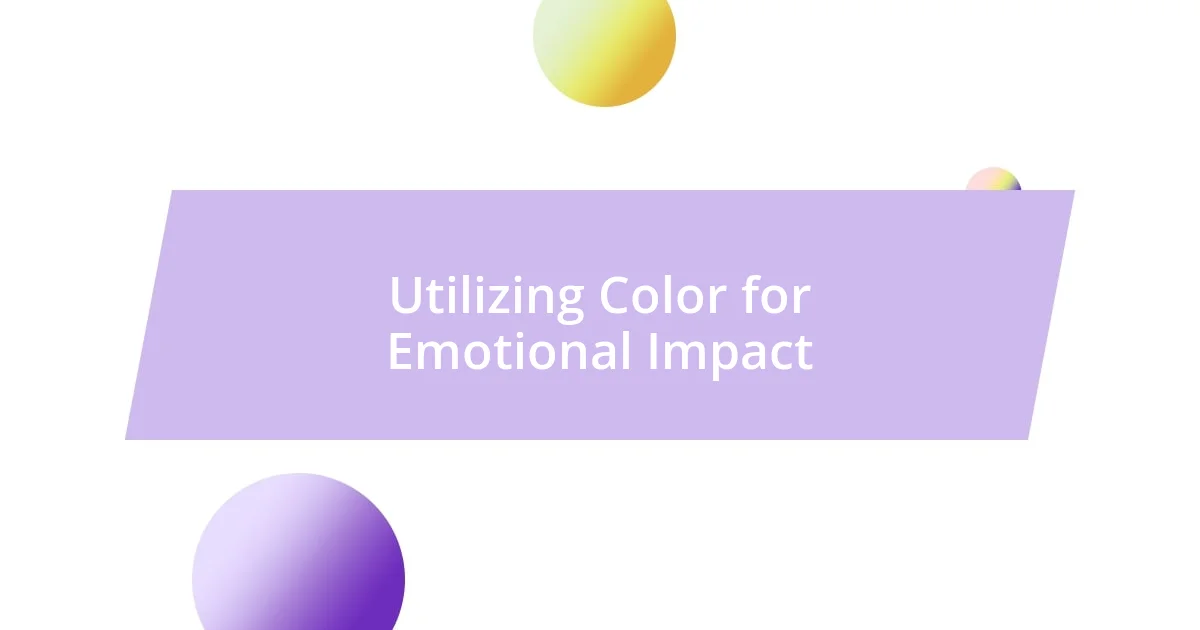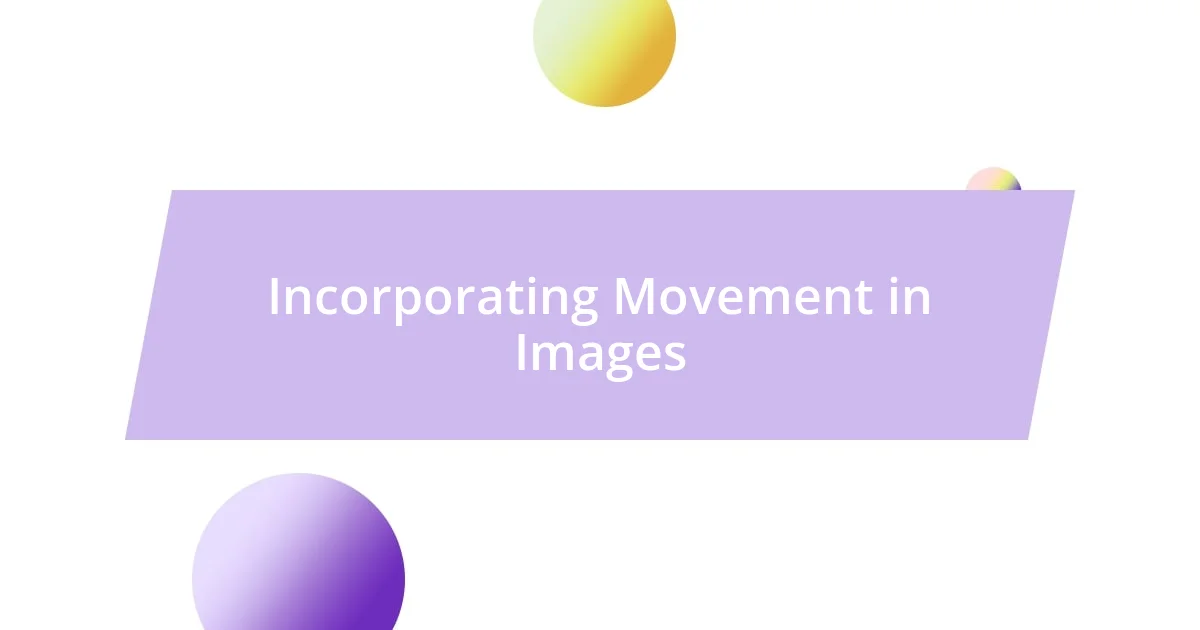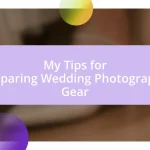Key takeaways:
- Visual storytelling relies on elements like composition, color, and light to convey emotions and narratives beyond words.
- Techniques such as the rule of thirds and leading lines enhance the viewer’s engagement and help illustrate deeper connections in images.
- Incorporating movement and context into photography can enrich the narrative, evoking feelings and inviting viewers to connect personally with the story depicted.

Understanding Visual Storytelling
Visual storytelling is a powerful way to convey messages and evoke emotions without uttering a single word. I remember the first time I captured a moment during sunset – the hues of orange and pink dancing across the sky made me feel a profound sense of peace. Can an image truly speak louder than words? Absolutely, because it encapsulates feelings and narratives that words often fail to deliver.
When I look at a photograph, I often try to decipher the story hidden within its frame. What did the subject experience? How do the colors, angles, and composition contribute to the overall mood? For instance, a close-up of a child’s laughter versus a wide shot of the same child in a park can tell vastly different stories, highlighting either intimate joy or a sense of adventure. This makes me reflect on how I choose to frame my own stories visually.
In my experience, the elements of visual storytelling—such as light, color, and emotion—are like tools in a painter’s palette. Each choice shapes the narrative, drawing the viewer into a deeper connection. Have you ever felt a wave of nostalgia from an old photograph? That emotional response is not just chance; it’s a testament to the power of visuals to portray complex human experiences and evoke shared memories.

Importance of Composition Techniques
Understanding composition techniques is vital in visual storytelling, as these methods set the stage for the narrative you wish to convey. I recall a time when I meticulously arranged the elements in my frame to highlight a fleeting moment between a mother and her child. The careful placement of subjects guided the viewer’s eye and created a sense of connection that words just couldn’t express. Isn’t it fascinating how composition can elevate an image from a simple snapshot to a compelling story?
Effective composition is more than just aesthetics; it serves as a roadmap for the viewer. Think of it as a way to lead the eyes through your image, unveiling layers of meaning. For instance, employing the rule of thirds allowed me to isolate a poignant moment of laughter during a family gathering, which drew attention to the joy radiating from my family member’s face. That moment became a cherished memory, showcasing the beauty of human connection. Can you visualize how the placement of visual elements plays a role in your experiences?
By honing composition techniques, one can articulate emotions and narratives with clarity. When I decided to explore leading lines in my photos, it transformed my storytelling approach. I vividly remember capturing a vibrant street scene where the lines naturally led the viewer’s eye to a couple sharing a warm embrace. That simple decision in framing made a significant impact, emphasizing the theme of love against the bustling backdrop. It’s incredible how such techniques can infuse greater depth into the stories we tell through our images.
| Composition Technique | Effect on Storytelling |
|---|---|
| Rule of Thirds | Highlights important elements and creates balance. |
| Leading Lines | Guides the viewer’s eye and emphasizes connections. |
| Framing | Adds depth and layers to the image while focusing attention. |
| Negative Space | Emphasizes the subject by creating tension or solitude. |

Utilizing Color for Emotional Impact
Color possesses an incredible ability to evoke emotions and convey messages that words sometimes cannot. I once attended a gallery exhibition where I encountered a series of photographs dominated by deep blues and greens. The overall atmosphere felt calm yet melancholic, transporting me to a distant, tranquil sea. It’s moments like these that remind me how warm tones, like reds and yellows, can evoke passion and energy, while cool tones tend to create a sense of serenity or sadness.
To illustrate how I approach color in my storytelling, here’s what I consider:
- Warm Colors (reds, oranges, yellows): Create excitement, energy, and warmth, often used to convey passion or make a scene feel welcoming.
- Cool Colors (blues, greens, purples): Impart feelings of calmness and tranquility, often emphasizing loneliness or introspection in an image.
- Monochromatic Schemes: Provide a cohesive and harmonious feeling, allowing the viewer to focus on shape and form, which can lead to more profound emotional interpretations.
- Contrasting Colors: Draw attention to specific subjects and create dynamic tension, enabling the viewer to feel the energy of the moment.
Each choice about color I make in my photography is deliberate and reflects what I seek to express. Recently, while photographing a sunset, I opted to enhance the vivid oranges and pinks digitally, and I felt an overwhelming nostalgia for childhood summers. I realized then that color isn’t just a visual element—it’s a language of its own that communicates our experiences and emotions more powerfully than words every time.

Harnessing Light and Shadow Effects
When capturing images, I’ve found that light and shadow can profoundly alter the mood of a photograph. I once took a serene portrait of my grandmother, illuminated by soft afternoon sunlight streaming through the window. The gentle light caressed her features, while the shadows danced around her, adding a sense of depth that made the image feel almost like a memory itself. Isn’t it interesting how light can evoke feelings of warmth and nostalgia?
In my experience, dramatic contrasts created by shadows can convey emotion and heighten tension within an image. I remember photographing an abandoned building at twilight, where deep shadows contrasted sharply with the fading light. This play between light and dark gave the scene an eerie yet captivating quality, compelling the viewer to linger and explore the details. It’s as if the shadows have a story of their own, wouldn’t you agree?
Harnessing light and shadow effectively allows us to guide the viewer’s perception and expectations. During a recent trip to the mountains, I positioned myself just as the sun began to dip behind the peaks, casting long, dramatic shadows over the rugged landscape. This moment transformed an ordinary scene into one steeped in mystery and adventure. Shadows, I’ve realized, can be powerful storytelling tools when employed thoughtfully, shaping the narrative and inviting the viewer to delve deeper into the image.

Incorporating Movement in Images
Incorporating movement in images can breathe life into still moments, creating a sense of dynamism that captivates the viewer. I vividly remember experimenting with a long exposure shot of a bustling city street. The bright lights blurred into a beautiful tapestry of color, and the passing cars transformed into streaks of light, capturing the exhilarating chaos of urban life. Isn’t it fascinating how a single click can convey the rush of movement and energy?
One technique I often use is panning, where I move the camera along with a moving subject. I once tried this while photographing a cyclist speeding by. The rider was sharp against a blurred background, conveying the thrill of speed and freedom. This method not only emphasizes the subject’s movement but also adds context to the environment, allowing viewers to feel the rush with him. Doesn’t it make you wonder how movement can tell a story that static images simply can’t?
I also love capturing fleeting moments that are inherently full of life and action. Some of my favorite photos are those of children playing in the park, their laughter seemingly leaping off the image. The blurred motion of swinging arms and running legs creates a symphony of activity and joy. It’s in these candid shots that I realize how movement can convey emotions like joy, excitement, or even a fleeting moment of connection. How can a photograph not just freeze a moment, but also capture the essence of life itself?

Enhancing Narrative with Context
I often think about how the context surrounding an image can weave a richer narrative. One time, I captured a sunset by the beach where silhouetted figures strolled along the shore. The included context of the vibrant sky and the gentle waves created an atmosphere of tranquility and reflection, evoking memories of my own beach trips as a child. Can you feel how those layers of location and time can transport you into a story?
There are moments when a photograph transcends the visual and taps into something deeper. I fondly recall photographing a local farmer during the harvest season; the sun setting behind him painted an orange glow across the fields. The context of his age, the tools he used, and the vast landscape surrounding him conveyed a narrative of hard work and tradition. Doesn’t it strike you how including the right elements can transform a simple portrait into a tale of endurance and connection to the land?
Sometimes adding small details enhances the storytelling aspect significantly. I remember photographing a cozy café corner adorned with books and plants. A steaming cup sat on the table, surrounded by a few lonely chairs — a scene that hinted at quiet moments of introspection or a friendly chat over coffee. It’s fascinating how these seemingly simple details can spark your imagination. What stories might unfold in such a space, and how can they resonate with our personal experiences?

Practical Tips for Storytelling Success
To really connect with your audience, think about the emotions you want to evoke. I find that using color palettes can dramatically influence mood. For instance, I once captured an autumn forest with vibrant reds and oranges. The warm hues made viewers feel cozy, almost like wrapping themselves in a soft blanket. Doesn’t it just make sense that the right shades can craft the feelings you want to convey?
Another practical tip is to utilize leading lines within your composition. I remember snapping a photo of a narrow path winding through a lush garden. The way the lines naturally drew the viewer’s eye deeper into the frame sparked curiosity, almost inviting them to take a stroll. It’s amazing how something as simple as perspective can change the way we perceive a story. How often do we overlook such elements that guide the viewer’s journey in an image?
Don’t forget the power of movement in storytelling as well. I recall one time I shot a dancer mid-leap, her silhouette framed by a sunlit stage. The captured motion conveyed grace and energy, immediately engaging anyone who saw it. It’s incredible to think how a fleeting moment, if timed just right, can echo emotions and narratives long after the moment has passed. How might your own images capture such fleeting beauty?














